OLED is an emerging display and lighting technology that enables beautiful and efficient displays and lighting panels. Thin OLEDs are already being used in many mobile devices and TVs.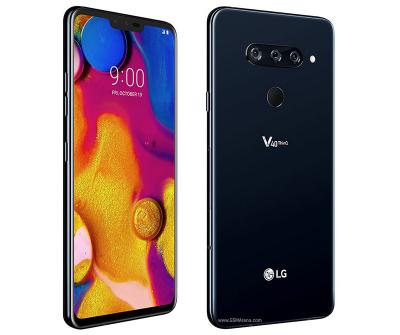
LG Display - pOLED displays
LG Display is one of the leaders in OLED production. LG Display started producing flexible OLEDs for mobile devices in 2015, initially focusing on small wearable OLEDs - for devices such as Apple's Watch and LG's own wearables.
In October 2017, following a large expansion in LGD's AMOLED production capacity, LG Display started to produce large flexible OLEDs for smartphones. This is when LGD also started to brand its OLED displays as pOLEDs (p is for plastic). LGD now provides its pOLED displays for several smartphone vendors, including Apple.
LGD pOLED production fabs
LG Display has several flexible OLED production fabs. The first one was a pilot 4.5-Gen line, with limited capacity - and so the E2 line is used to produce LGD's flexible wearable OLED displays.

LG Display's second pOLED fab is is its E5 line in Gumi, which has a monthly capacity of 7,500 monthly 6-Gen substrates (or about 1.5 million 5.5" panels at 100% yields). LG Display's thoird line is the E6 line in Paju which is another 6-Gen line, but with a larger capacity of 15,000 monthly substrates.
LG's fourth flexible OLED line may be built at the company's large P10 display production complex in Paju. The P10 will be a large display complex with a total investment of close to $10 billion - but will mostly produce OLED TV panels. It could include a flexible OLED line, but LG's plans are not finalized yet, its seems.
pOLED vs PLED
pOLED is LG Display's brand name for mobile flexible AMOLED displays. Somewhat confusingly, PLED, also called P-OLEDs, are Polymer-based OLED materials - a class of materials pioneered by CDT (now owned by Sumitomo) that can be used to create OLEDs (most OLEDs today use Small Molecule OLED materials). For more on PLEDs, see here.
Further reading
The latest LG pOLED news:
LG announces its new 5G and CSO OLED smartphones
LG announces three new smartphones that feature AMOLED displays. First up we have the G8 ThinQ, a high end smartphone that features a 6.1" 1440x3120 Crystal Sound OLED, a Qualcomm Snapdragon 855 chipset, 6 GB of RAM, 128 GB of storage, a microSD slot and a triple camera setup.
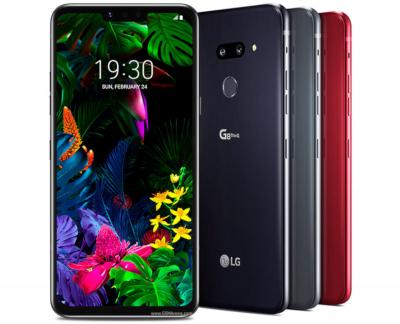 LG also offers a variant called the G8s ThinQ which sports a slightly larger display (but with lower density) - a 6.2" 1080x2240 pOLED. Otherwise the specifications are quite similar. The idea is that a CSO display vibrates and turns into a diaphragm - to produce high quality sound. LG says that such a speaker improves the clarity compared to regular smartphone speakers. The G8 ThinQ will also use other audio technology, including DST-X 3D Surround Sound emulation, Hi-Fi Quad DAC, Master Quality Authenticated (MQA) and more.
LG also offers a variant called the G8s ThinQ which sports a slightly larger display (but with lower density) - a 6.2" 1080x2240 pOLED. Otherwise the specifications are quite similar. The idea is that a CSO display vibrates and turns into a diaphragm - to produce high quality sound. LG says that such a speaker improves the clarity compared to regular smartphone speakers. The G8 ThinQ will also use other audio technology, including DST-X 3D Surround Sound emulation, Hi-Fi Quad DAC, Master Quality Authenticated (MQA) and more.
LG: it is too early for us to launch a foldable smartphone, even though the technology is ready
LG Electronics says that it will introduce its first 5G smartphone (the V50 ThinQ 5G, which will probably use a pOLED display) in MWC 2019 next week - as it hopes this will help it rebound its smartphone business. At MWC it will also launch its G8 ThinQ with its Crystal Sound OLED.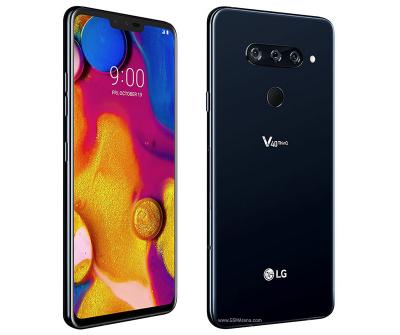
Regarding foldable OLED technology, the LG's president says that it is still premature to release a foldable phone. The company says that its technology is ready - and in fact LG already introduced its rollable OLED TV which is even one step ahead of foldable technology. If consumer reaction to foldable smartphones is positive the company is "fully ready to respond".
LGD to start OLED TV mass production in Guangzhou in Q3 2019, does not commit to pOLED expansion
LG Display reported its financial results for Q4 2018 - it reported an operating profit of â©279 billion ($250 million USD) due to strong shipments of IT panels and OLED TVs. LGD however gave a weak outlook to 2019 (for its LCD business).

LGD says that it will invest $7.1 billion in 2019 in capacity expansion, and $3.5 billion in 2020. It will divert all of its investments into OLED displays - with 60% going to large area OLED TV production and 40% going to small/medium pOLED production.
LGD expects to start shipping automotive OLED displays by the end of 2019
LG Display has been demonstrating its pOLED automotive displays for a long time (reportedly it signed an agreement with Mercedes back in 2016, and with Toyota, Volkswagen and General Motors in 2018).
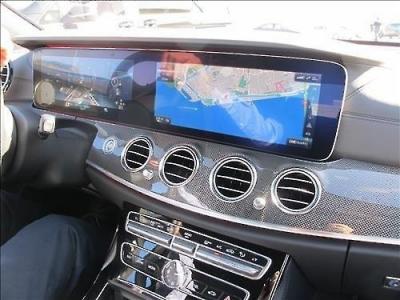
During the company's recent conference call, LGD's CFO, D.H. Seo, said that they expect to see some revenus from its automotive pOLED business "by the end of 2019".
Users complain about the quality of LGD's pOLED used in the Google's Pixel 3
Google's 2017 Pixel 2 XL was one of the first phones to adopt LG Display's pOLEDs (6" 1440x2880) - and initial reviews of the display were rather dismal - as both reviewers and customers complained about bad color reproduction, graininess and problematic viewing angles. Many users also reported serious image retention issues.
![]()
In 2017, Google used Samsung's Super AMOLED displays in the smaller in 2017. This year, for the 2018 Google Pixel 3, Google chose SDC's 6.3" 1440x2960 Super AMOLED for the larger Pixel 3 XL - with proved to be a top-notch display. For the smaller Pixel 3, Google picked LG Display's 5.5" 1080x2160 - probably hoping that LGD managed to improve its displays - and most importantly its quality controls.
DisplayMate: the Google Pixel 3 XL AMOLED is made by SDC, is a top-notch smartphone display
Display measurement experts Display Mate posted an in-depth review of the Google Pixel 3 XL 6.3" 1440x2960 AMOLED display. The display wins DisplayMate's highest ever Overall Display Assessment Grade of A+ together with a DisplayMate Best Smartphone Display Award.
![]()
DisplayMate says that Google now joins Apple and Samsung as the top tier of smartphone displays. The Google 3 XL display is on par with the AMOLED display used in Samsung's Galaxy S9. Interestingly, it turns out that Samsung Display provides this 6.3" AMOLED display to the Pixel 3 XL, while LG Display is likely to be the supplier for the smaller 5.5" 1080x2160 display used in the Pixel 3.
Sony's flagship pOLED Xperia XZ3 smartphone now available for pre-order
Sony's latest flagship phone, the Xperia XZ3, will ship in September 24 in the US for $900 - and you can pre-order it now at Amazon.com. This is the single-SIM edition. In the UK, the XZ3 will ship in October 2018 for £699.
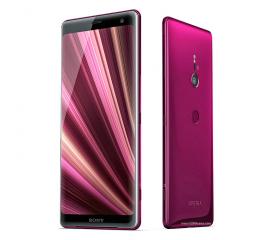
The Xperia XZ3 is a high-end smartphone that features a curved 6" QHD+ 1440x2880 (537 PPI) LG pOLED display, a Qualcomm Snapdragon 845 chipset, 4 GB of RAM, 64GB of storage, microSD slot, Dual-SIM (optional) and a 19Mp 4K HDR camera.
WSJ: LGD won't be able to produce OLED displays for Apple's 6.5" 2018 iPhone
In January 2018 it was reported that LG Display is in the final stages of its discussions with Apple, and the Korean OLED maker expects to supply 15-16 million flexible OLEDs to Apple in 2018 (LGD will supply Apple with 6.5" AMOLEDs for its 2018 large iPhone OLED variant).
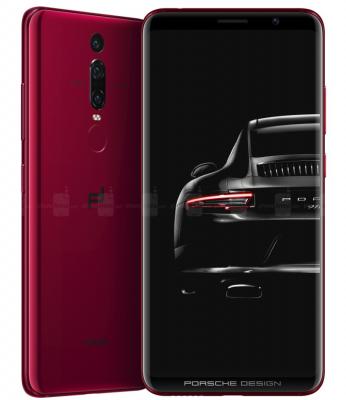
The Wall Street Journal now reports that LG Display may not be ready to produce these OLED displays in time for Apple - who may once again rely on Samsung Display to produce all of its OLED iPhone displays in 2018.
LG Display to supply Sony with pOLED displays for future smartphones
According to Business Korea, LG Display signed an agreement with Sony to supply it with flexible pOLED displays for future Sony smartphones. Sony is not a major smartphone player globally, but in Japan it holds 14.9% of the market (second only to Apple).
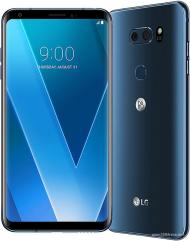
LG Display is already supplying Sony with OLED displays for Sony's OLED TVs, and reportedly in 2017 Sony requested LGD to double its OLED panel shipments as demand for Sony's OLED TVs has been better than expected.
Some of Google's Pixel 2 XL pOLED displays are better than originally reported
Google's Pixel 2 XL (which started shipping in October 2017) is one of the first two phones to adopt LG Display's new 6" 1440x2880 (538 PPI) pOLEDs (alongside with LG's own V30). While on paper these displays are superb, actual reviews were rather dismal - as both reviewers and customers complained about bad color reproduction, graininess and problematic viewing angles. In addition many users seem to report serious image retention issues.
According to reports in 2017, LGD faced very low yields at its 6-Gen E5 line, and so had to produce these smartphone displays at its Gen-4.5 flexible AMOLED line. Some users are now saying that these issues do not plague all of Google's phone - and some come with noticeable better displays. This should be good news for LGD and it's likely that as the company gains more experience with smartphone pOLED production, it will produce better looking displays in better yields.
Pagination
- Previous page
- Page 4
- Next page



